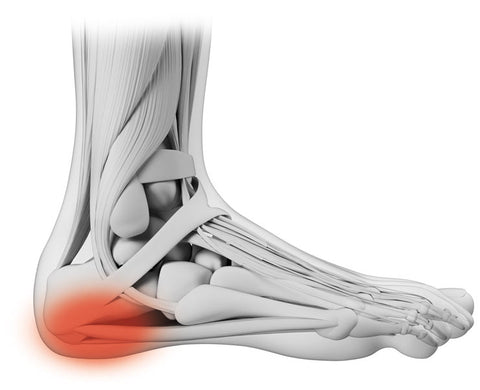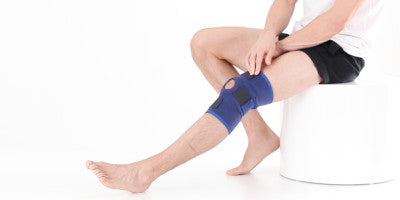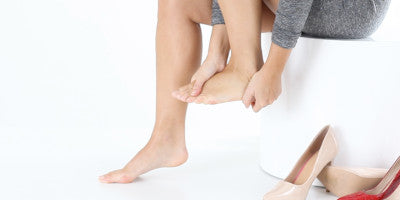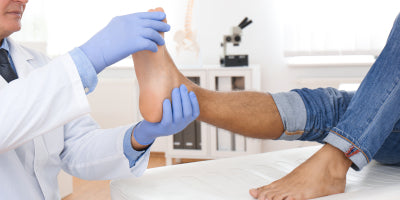Top Plantar Fasciitis Exercises

Plantar fasciitis, a common yet often underestimated ailment, is a painful condition which results in a deep ache or sharp stabbing pain in the heel or along the arch of your foot. This painful condition, stemming from inflammation of the plantar fascia—a thick band of tissue connecting the heel to the toes—plagues individuals with discomfort. With each step, sufferers are reminded of its presence, as a sharp, stabbing pain pierces through the heel or along the bottom of the foot. The profound impact of plantar fasciitis on mobility, daily activities, and overall quality of life underscores the urgency for effective management and compassionate understanding of those grappling with this painful condition.
The pain and stiffness along the arch of the foot and in the heel that is characteristic of Plantar Fasciitis can make exercise, as well as daily activities and walking, difficult. Luckily there are steps you can take to relieve your symptoms and with some treatment, such as exercises and supports, you should be able to get back to doing the exercise and activities you enjoy.
Plantar Fasciitis Causes

Before we dive into some exercises that can help relieve plantar fasciitis, it is important to understand what causes the condition. Overloading of the Plantar Fascia is more often than not as a result of another issue and rarely occurs on its own. Your feet carry the entire weight of your body on them, and the arch of your foot holds itself up. Most shoes actually do very little to support your arches and therefore, the main cause of plantar fasciitis is a lack of support in the arch. However, there are other risk factors that can help develop this condition:
- Inadequate stretching
- Obesity or an increase in weight
- Tightness of the Achilles tendon
- High arch issues
- Weak plantar flexor and intrinsic muscles of the foot
- Overused or inappropriate shoes
Plantar Fasciitis Exercises To Do At Home
Whether you’re just starting to experience Plantar Fasciitis symptoms or have an established condition, stretching out the muscles in the feet could help.
Try these plantar fasciitis exercises daily to relieve symptoms and get back on your feet sooner.
- Foot rolling stretch: Sit down and rest the arch of your foot on a round or cylindrical object, for example a drinks can, tin of beans or a foam roller. Roll the arch in all directions for a minute on each foot. For an added benefit ensure the object is cold before rolling to help reduce pain symptoms
- Foot flex: Looping a towel around the ball of your foot, pull your toes towards your body, keeping your knee straight. Hold for 30-seconds and repeat up to three times on each foot.
- Foot stretch: Sit down and cross your foot over the opposite knee. Take the base of your toes and pull them back until you feel a comfortable stretch. Hold for 20-seconds and repeat up to three times on each foot.
- Towel scrunch: Smooth a towel on the floor and place the injured foot on top. Sitting on a chair and keeping your heel down and still, use your toes to pull the towel towards you by scooping it in with your arch and toes. Repeat five times on each foot.
It’s not just your foot you need to worry about - tight calf muscles and a stiff Achilles Tendon can aggravate Plantar Fasciitis and cause further pain in the foot. Soothe symptoms with the following stretches.
- Wall stretch (static): Facing a wall, lean forward and place your hands upon it. Straighten the knee of your affected leg and bring your other leg across your body and place that foot against the wall. Keep the affected foot flat on the floor and hold for 10 seconds – you should feel a stretching sensation in the heel and calf of your extended leg. Repeat two to three times on each side.
- Wall stretch (dynamic): Imagine a clock face on the floor; with your hands against a wall, straighten the knee of the affected leg and place at the 6 o’clock position. Swing the other leg across your body back and forth 5 times between the 1 and 11 o’clock position, repeat for the 3 and 9 o’ clock position as well as the 4 and 8 o'clock position. In all positions you should feel a stretch on the affected legs calf muscle.
- Stair stretch: Stand on the bottom step of a staircase. Holding the stair rail for support and with your legs slight apart, position the feet so that both heels are off the end of the step. Lower the heels, keeping the knees straight but not locked, until you feel a tightening in your calf. Hold the position for 20-60 seconds and repeat six times.
Plantar Fasciitis Treatment

For quick plantar fasciitis relief, our Plantar Fasciitis Every Day Support features a silicone heel insert which provides cushioning and comfort. The advanced silicone heel cushion also helps provide impact protection to an area greatly affected by plantar fasciitis. Like other Neo G knitted supports, it also features Multi Zone Compression. Highlighted on the above image, the zones of different compression levels promote blood flow and combat swelling. They can be worn all day, with or without footwear, and could be a first port of call for plantar fasciitis sufferers.

As mentioned above, the area of your foot that needs support in the fight against plantar fasciitis is the arch. NeoThotics Pro Expert insoles are orthotic insoles that provide what your feet actually need, support and stability. They feature a firm arch support, which is needed to hold the weight of your body.
Beyond arch support and indeed plantar fasciitis (which we’ve established is as a result of another issue), Neo G NeoThotics Orthotic Insoles work to provide realignment of the feet to help with underlying conditions you may have. Orthotic insoles work by causing the nerve endings in your feet to send signals to your brain as they react to the insoles’ firm shape. The muscles in your feet and legs will begin to adapt to the new shape of the insole, realigning the body. NeoThotics Pro-Expert orthotic insoles achieve this realignment with a number of features, including:
- A deep heel cup, which provides stability for the heel.
- Tru-Arch support, which is firm and strong, providing the arch of the foot with support at the optimal level.
- Multi-Way Motion Control helps steady unnatural movement of the feet, which in turn helps to correct posture and promotes a correct alignment.
It is after your body has realigned that the insoles should be comfortable to wear, as the process of realignment can be uncomfortable at first. During the realignment phase, it is suggested that orthotics are worn only a few hours a day. The best way orthotic insoles work is with your perseverance through the realignment phase until you feel relief in your feet, legs, knees or back.
To learn more about orthotic insoles and to determine if you might need them, read this blog.
If you continue to struggle with Plantar Fasciitis, speak to your GP or a physiotherapist, who will be able to recommend further treatment.


















